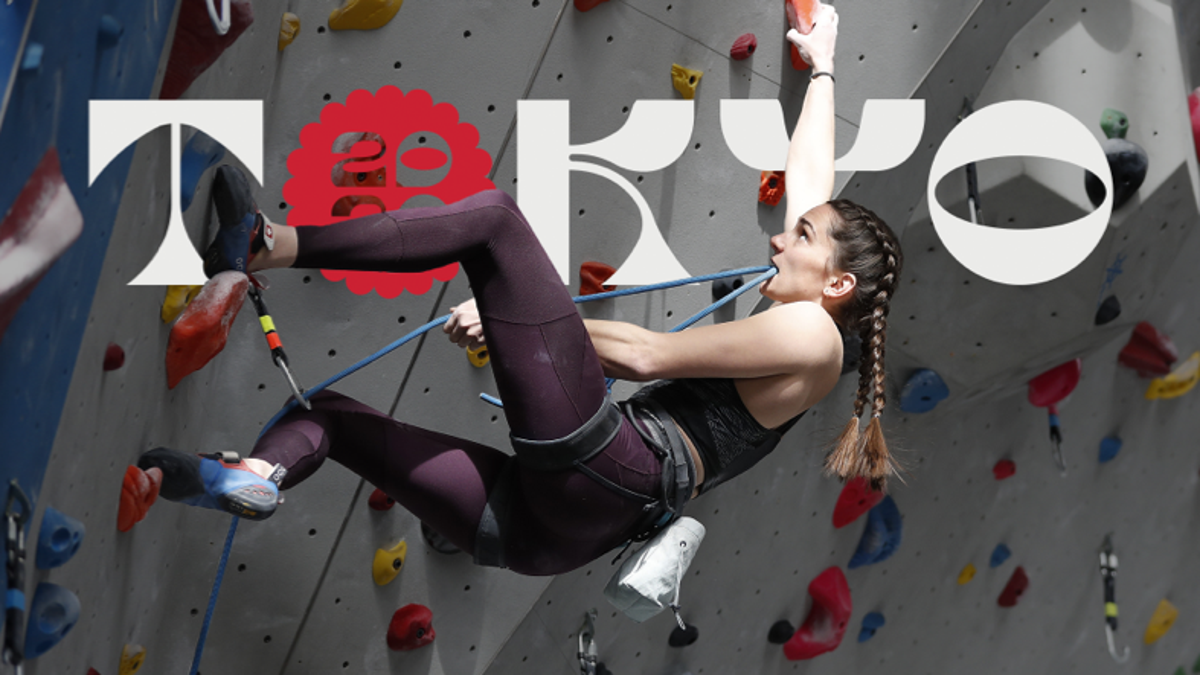
Sport climbing is one of the five new sports in the Summer Olympics in Tokyo. And as the television audience holds its collective breath while climbers ascend a wall in one of three disciplines, it's worth taking a moment to get inside the head of a climber and learn how the sport works.
USA TODAY talked to Kyra Condie, who represents the United States in the sport’s Olympic debut.
But first, let's start with the basics. Sport climbing consists of three disciplines: speed climbing, lead climbing and bouldering. The person who does best in all three disciplines wins the gold.
Sport climbing makes Olympic debut in Tokyo, here's everything you need to know about it
American climbers Nathaniel Coleman, Colin Duffy and Kyra Condie tell you everything you need to know about Olympic sport climbing.
SportsPulse, USA TODAY
In speed climbing, two competitors race to the top of a 49-foot wall in a matter of seconds. In lead climbing, they have six minutes to climb as high as they can on an increasingly complex wall without falling. Condie’s favorite is bouldering.
“I think bouldering goes along with my personality the best. … It’s usually shorter climbs that are really hard," Condie said. "And so you have to try as hard as you can for like five moves. And so it takes a lot of focus for like those five moves, but then you can reset and try again and things like that.”
In bouldering, Condie has four or five minutes to ascend a series of predetermined setups on a 13-foot wall, known as routes.
In bouldering competitions, the climber who reaches the most top holds is declared the winner. If there is a tie, the climber who reaches the most zone holds and requires the fewest attempts to complete each route has the advantage.
Here are the key areas of the bouldering wall:
Start hold
The more pieces of tape on a hold, the more hands and/or feet you need on that hold to initiate the start of the route. Once all points of contact have been made on the hold, the route has begun.
Top hold
Once she reaches the top hold, Condie must securely touch the hold with both hands for the judges to declare the route complete.
Out of bounds
Condie cannot use the holds or touch the walls outside the route. If she does, the judges will mark the route as a failed attempt, and she has to start over.
Zone hold
A hold marked with pink tape is called the zone hold. This hold is a marker within the route where a climber can earn a score without completing the full route, but only as long as they get a stable grip on the hold. If a climber is able to complete the route, they will get the score regardless whether they get a grip on the hold. This is used for tiebreakers if multiple climbers complete the same number or routes.
The wall
The wall itself is constructed fairly smoothly. Sockets are built into the wall to configure the holds into any angle and position. The sockets cannot be used by the climber. Placing fingers into the holes for grip will count as a failed attempt, and the climber will have to start over.
In preliminary competition, Condie will not know what the wall will look like until it is her turn to climb.
“The first thing you do when you look at a climb is you look at where the start is, look at where the finish is, and look at where the zone hold is. And you identify “OK, that’s the zone, that's the top, OK, how do I get there?” And then you kind of go through “OK, I'm going to go right hand on this hold, left hand on this hold, probably a jump here, put my foot there and then I'm going to grab the top and match.” That's the general thought process, but then you look for other clues as to what the sequence of the climb might be, or the 'beta.' And things like that are directional footholds, or if there is a hold that's slippery on one side versus textured on another side, you know that you have to grab it on that side. Things like that.”
Crimp
“A crimp is a really small edge, and so if you can imagine grabbing the edge of a doorframe, that’s basically what it is.”
Sloper
“A sloper is a really large rounded hold that slopes downward, so it’s really hard to get a good grip on it – you have to really use friction to your advantage.”
Pinch
“A pinch is pretty self-explanatory: You pinch it as hard as you can, so you really have to use both your main fingers and your thumb.”
“Pockets are just tweaky – you can hurt yourself easily on pockets. So pockets are holds that you can get only one or two fingers in, and you have to take all your body weight on it usually. They can be really scary.”
Jug
“A jug is a hold that is really good. Basically it’s just an all-encompassing hold that is a good hold.”
“I think for me nothing beats the feeling when you finishing a climb in front of a huge crowd, especially if you are the first person to do it. The crowd is just cheering, and you’re on this finish hold, and you get to turn around and look and do a fist bump, and it's really cool.”
The Tokyo Olympics begin July 24, and sport climbing begins Aug. 3 with men's combined qualification.
Published Updated
https://ift.tt/3iv41Li
Sport
Bagikan Berita Ini














0 Response to "Sport climbing at the Summer Olympics: A visual guide to new event at Tokyo Games - USA TODAY"
Post a Comment